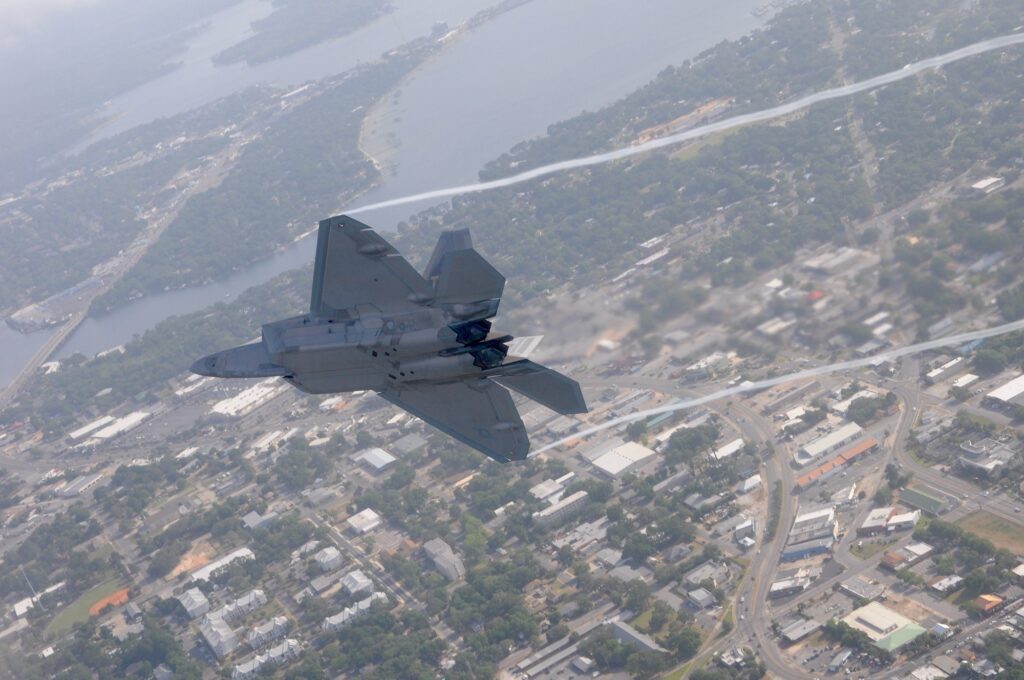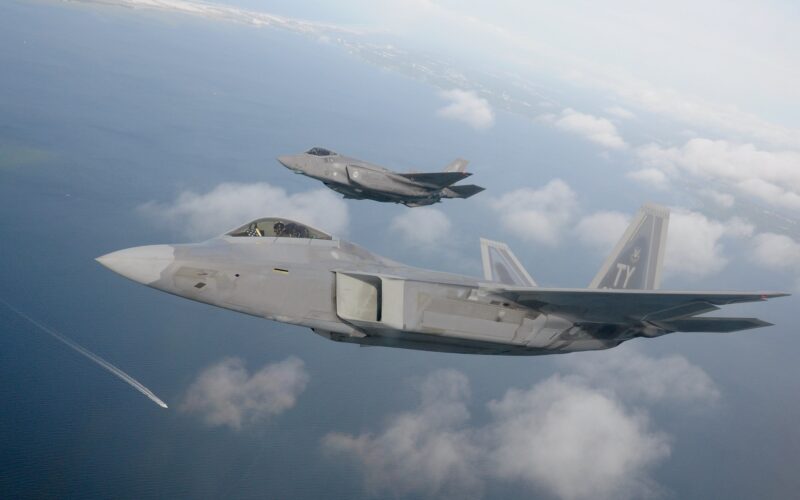In early 2023 the venerable Lockheed Martin F-22 Raptor seemed to be given a new lease of life after shooting down a Chinese spy balloon, scoring the first kill of its career and briefly becoming the star of the headlines.
The Raptor has been touted as one of the most modern and capable fighters in the world. The jet has it all: incredible maneuverability and raw power for close-in dogfights, as well as stealth, sensors and weapons for long-range engagements.
The F-22 defined an entire generation of combat aircraft. Every new stealth fighter has been invariably compared to the Raptor, and even now discussions about what does – and does not – constitute a fifth-generation fighter jet begin with a comparison to the F-22.
With all this fame, it is sometimes easy to forget how old the Raptor is. The jet’s star hour came nearly three decades after its first flight in 1997, and 17 years after it was introduced into service in 2005. Its production has also been over for more than a decade, and the number of Raptors in active service is steadily dwindling.
To understand that let’s compare the Raptor to the F-35 Lightning II, the only completely new United States-made fighter jet to come out after the F-22.
In late 2021 Lockheed Martin set a goal to build and deliver 196 F-35s within one year, more than the total number of F-22s ever manufactured. Due to production problems Lockheed’s plans failed, but the company still delivered more than 160 F-35s in 2022, which exceeds the total number of F-22s in active service today.
How did that happen? How was the F-22 – with all of its praised capabilities – sidelined in favor of the newer jet? And what is its role today?
Bad time for a good jet

The F-22 was conceived at the end of the Cold War as a replacement for the McDonnell Douglas F-15 Eagle. At the time the F-15 was mostly an air superiority fighter, designed to combat air threats. It was several years later before the F-15E Strike Eagle, a version with a greatly expanded ground attack capability, gained prominence.
Being a replacement for the F-15, the F-22 was also an air superiority fighter, with ground attack capability as an afterthought. Its prototype, the YF-22, took to the skies in 1990, just as the Soviet Union began to crumble, bringing an end to the Cold War.
By the early 2000s the United States military was completely focused on the war against terrorism, a campaign where high-performance stealth fighters weren’t needed. So, the number of F-22s on order was drastically cut, from more than 700 to fewer than 200.
The initial cost of an F-22 was estimated to be $59 million per aircraft. Nearly half of its total program cost went to research and development, creating advanced features that had not been previously seen on an aircraft. However, the cuts in production meant that such an expensive development resulted in very few aircraft. There were also some cost overruns, and the F-22 ended up costing more than $360 million per aircraft.
The US government still recognized the strategic edge such an advanced aircraft gave its armed forces. So, in 2016, the government issued a ban on selling the F-22 to foreign buyers, meaning that the tremendously expensive development could not be offset by foreign sales.
A rising star
The F-22 was always meant to be accompanied by a lighter, cheaper fighter, just like the F-15 was supplemented by the F-16. This is how the F-35 appeared: a single-engine stealth fighter filling the strike gap left by the F-22.
Initially intended to be significantly cheaper than the Raptor, the F-35 also failed to avoid budget overruns. It was also plagued by production problems, and its program ended up costing several times more than was initially planned.
However, despite the rising costs, the US did not stop ordering new F-35s. For one, the government had outlined a big role for the new jet, which was intended to replace a host of old aircraft, including the F-16, the F/A-18, the AV-8 Harrier and the A-10.
International tensions had also begun to rise. The bulk of F-35 orders were made between 2016 and 2018, when the country’s geopolitical rivalry with Chia and Russia became more acute, and the US needed urgent rearmament to keep up.
The F-35 experienced far more favorable circumstances than the F-22. The F-35’s program development was also more international, with ample foreign orders being included in the program. As problems with the jet began to be ironed out and costs fell, new orders began to flow in.
And so, the F-35 became the most produced fifth-generation fighter jet. In 2023 Lockheed Martin began the assembly of the 1,000th F-35 airframe, while the number of combat-capable F-22s continues to get smaller and smaller.
A duo that was not meant to be
After shooting down the Chinese spy balloon the Raptor was showered with praise and attention. This shows the jet is still well-liked by the public. And with a good reason.
While the F-35 is definitely a more advanced aircraft, the F-22 still maintains an edge in certain key areas. Its maneuverability, in addition to providing impressive airshow performance, makes the Raptor an unrivalled dogfighter, and an important asset for air defense.
However, the jet’s days are already numbered. Rumor has it that a significant part of the F-22 fleet is being cannibalized to sustain the rest. Production of new F-22s is not only unlikely, but practically impossible because most of its manufacturing facilities were repurposed to produce F-35s. Finally, a replacement is already on its way. The Next Generation Air Dominance (NGAD) program, which aims to develop a sixth-generation fighter, is bound to produce a new air superiority jet for the US by the 2030s.
Recent plans show that the United States Air Force plans to operate large numbers of F-35s alongside NGAD fighters, but there is no place for the F-22.
While the F-22 and the F-35 were originally intended to work as a pair, the duo was doomed by the circumstances that befell the older of the two aircraft. The F-22 appeared at a time when there had been no real need for such an advanced jet. And when the circumstances changed, it was already too late because it had already been overshadowed by the F-35.

